Welcome back to the 18 Stripes Film Room!
In his press conference on September 14 following the opening win against Duke, Brian Kelly dropped this tidbit about the offense:
“We had a running back who was seeing things for the first time. We went to a different offensive blocking scheme. We weren’t a pin and pull team this year and in this game. We were a big pin and pull team last year. We featured the outside zone play as our primary blocking scheme and that requires patience and seeing things and aiming points and you need a live game situation. That requires patience on our part. I thought Coach Rees did a great job of being patient and sticking with the running game after not having the success early on. We had great success in the second half. That is getting the reps and being patient and sticking with it. It was just going to be a matter of time.”
What does Coach Kelly mean when he says the Irish went to a different blocking scheme? And what is the outside zone play? Let’s go to the film and find out.
Zone Blocking Basics
Let’s start at the beginning – zone blocking. You can break almost all running plays into two categories: gap blocking and zone blocking. Gap blocking means the back is going to run through a certain gap – maybe between the tackle and the guard. The goal is to get as many blockers as possible to that gap and wall off the defenders. Zone blocking is both simpler and more complicated. Despite its name, linemen aren’t really blocking a “zone”. If there is a defender in front of him, he blocks him. If not, he either moves up to block a linebacker or safety, or he double teams the defender with the lineman next to him. But there are tons and tons of coaching points beyond that, from footwork to hand placement to dealing with blitzes and shifts and stunts and on and on and on.
There are two basic types of zone runs – the inside zone and outside zone. On inside zone runs, the linemen fire straight ahead and the running back aims to run either between the center and guard or between the guard and tackle. On outside zone runs, the linemen move laterally and the running back either runs between the guard and tackle or bounces it outside.
This gets to something else Kelly said. The running back plays a big part in making these plays successful. He has to read the blocks and find the hole to run through. If the defense overcommits to the inside, he might bounce it outside. If too many defenders go outside, he might cut back inside through the area they vacated. That’s the advantage of the zone run plays – if the linemen make their blocks and the back reads it correctly, he should always be able to get positive yards.
Finally, what did Kelly mean when he talked about “pin and pull”? Pin and pull is similar to outside zone but it involves pulling linemen. A tackle and tight end will seal off the edge (the “pin” part) and two linemen (usually both guards or a guard and center) will pull around as lead blockers (the “pull” part). The running back’s job is the same as it is on normal outside zone plays – run outside and find a gap to run through. This was a staple if the Chip Long offense. Check out this Josh Adams run against UNC in 2017:
The Outside Zone
The outside zone is very common in both college and the NFL and across the whole spectrum of offenses. Most spread teams primarily use zone blocking, and even Kirk Ferentz’s traditional “pro-style” Iowa offenses are famous for using the outside zone as their primary run play. So Coach Tommy Rees is in good company with his decision to use the outside zone as his primary run play.
Let’s look at how the Irish run the outside zone.
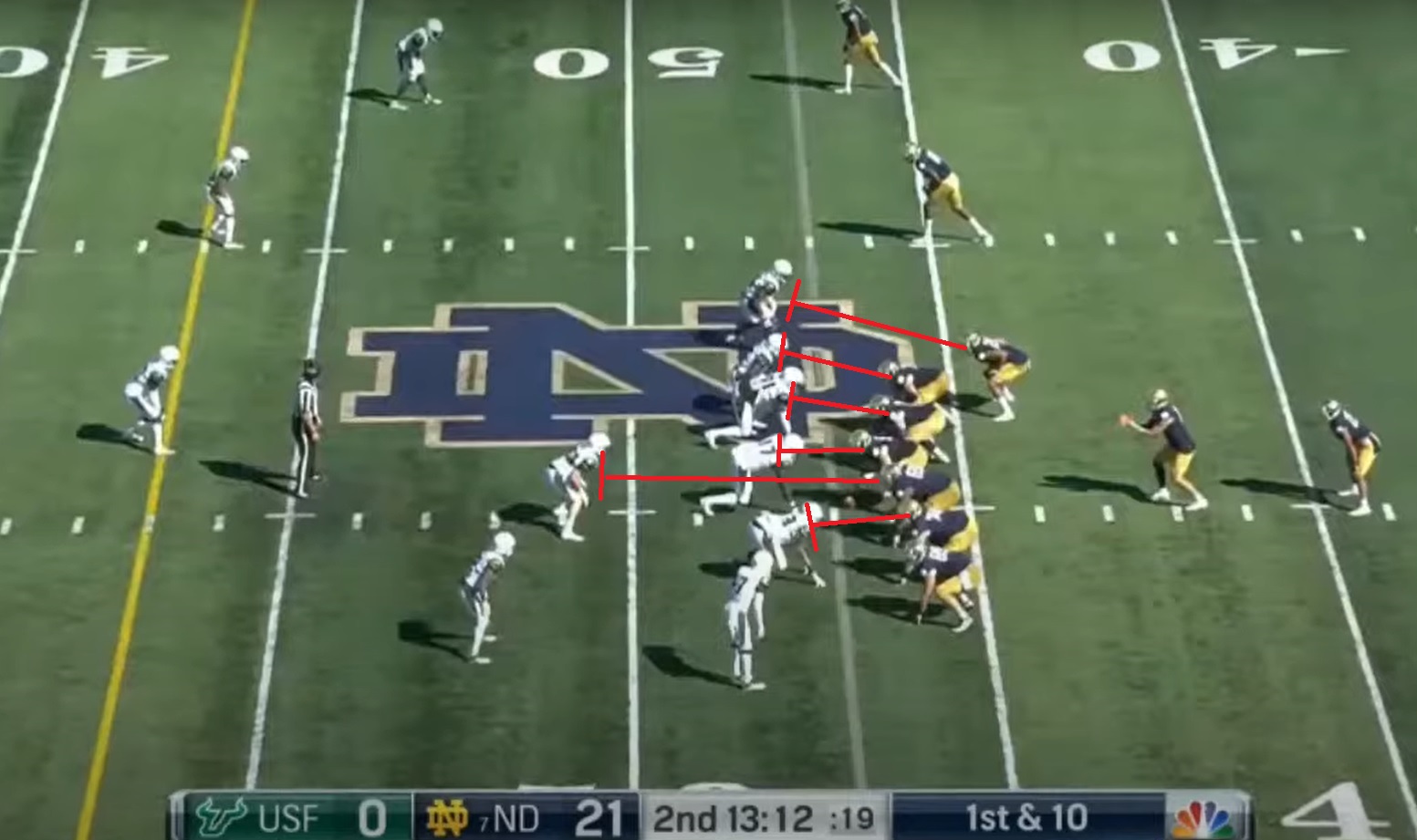
The first question the linemen have to ask is “Am I covered?”. This is easy because South Florida is crowding the line of scrimmage. Everyone – including tight end Tommy Tremble – is covered except for left guard Aaron Banks. But he has a linebacker in front of him, so his job will be to double team the defensive tackle with center Jarrett Patterson and one of them will go block the linebacker.
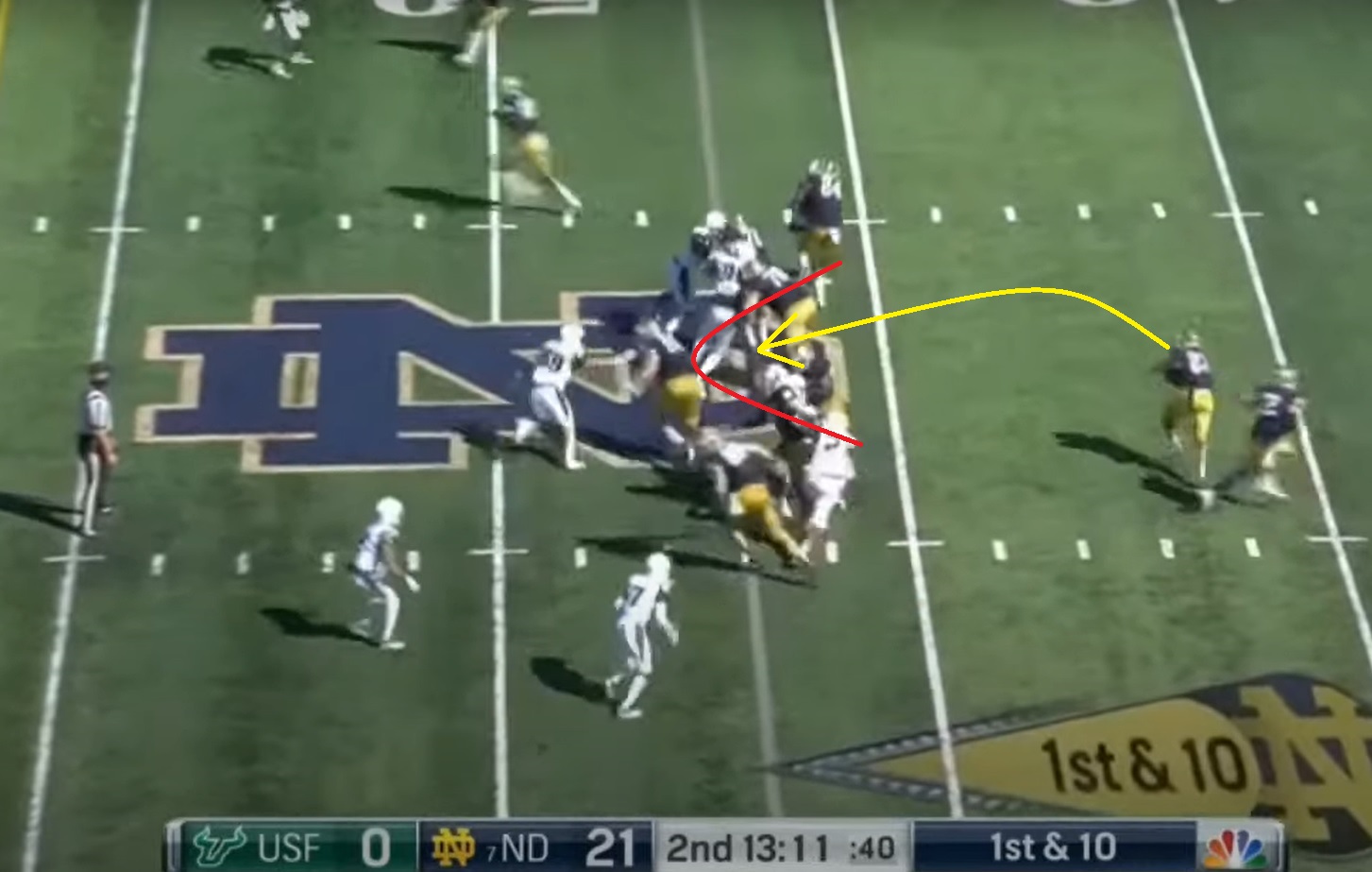
Banks controls the tackle so Patterson is free to block the linebacker. You can see a hole start to form in front of Patterson. Kyren Williams originally tries to go outside, but he sees the hole open up and cuts back inside.
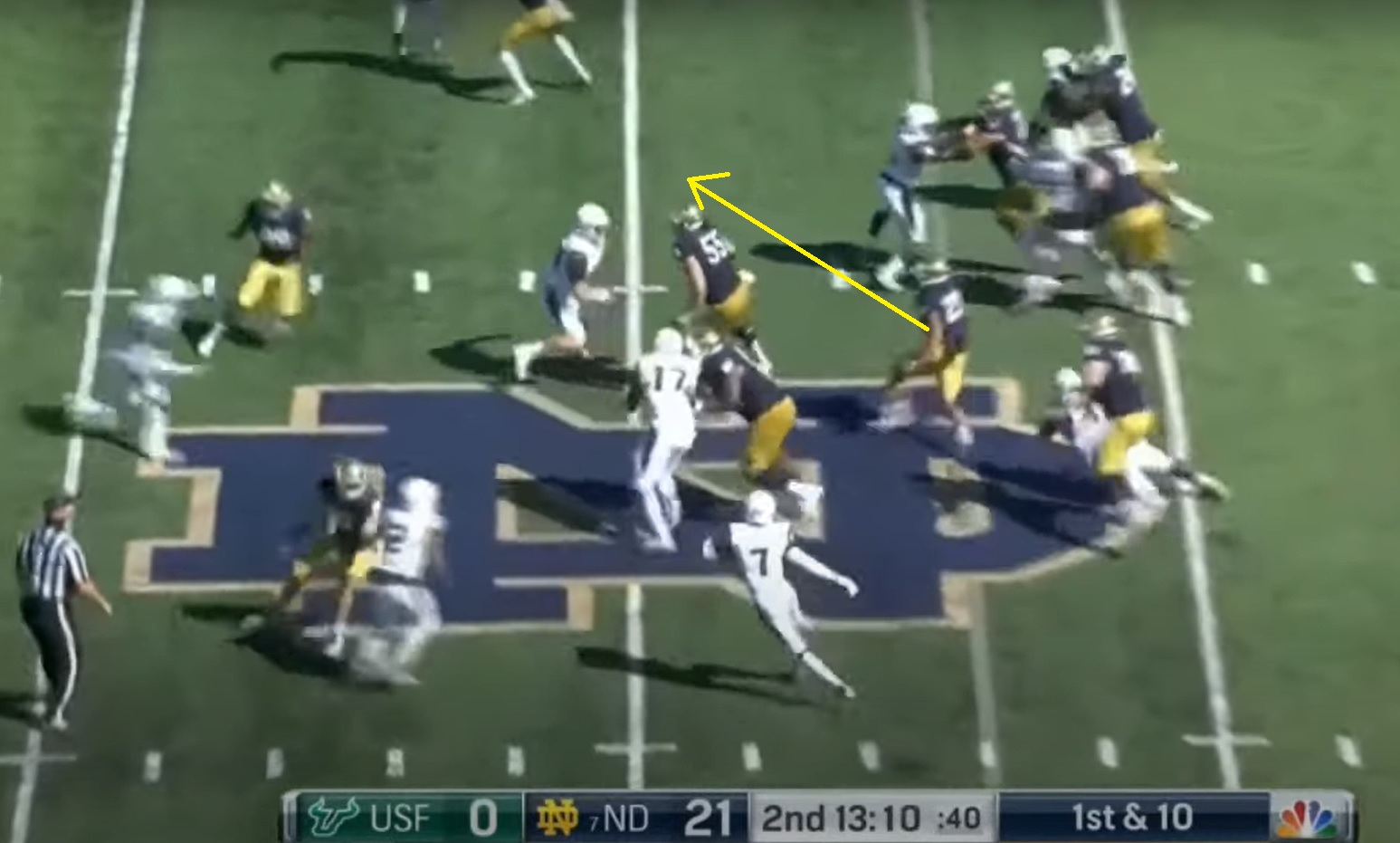
The offensive line and Williams all do their job perfectly. The linemen wall off their defenders and Williams makes the correct read. It’s an easy 10 yard gain.
Here’s a play from late in the game with a good view of the linemen. Watch out the linemen move laterally at the snap and how C’Bo Flemister reads the play correctly and runs around the edge to the outside.
Two Back Outside Zone
Tommy Rees also introduced a wrinkle to the outside zone play. Against Duke, Ian Book lined up with Kyren Williams and Chris Tyree on either side of him. Tyree will get the handoff and Williams will lead the way as a blocker.
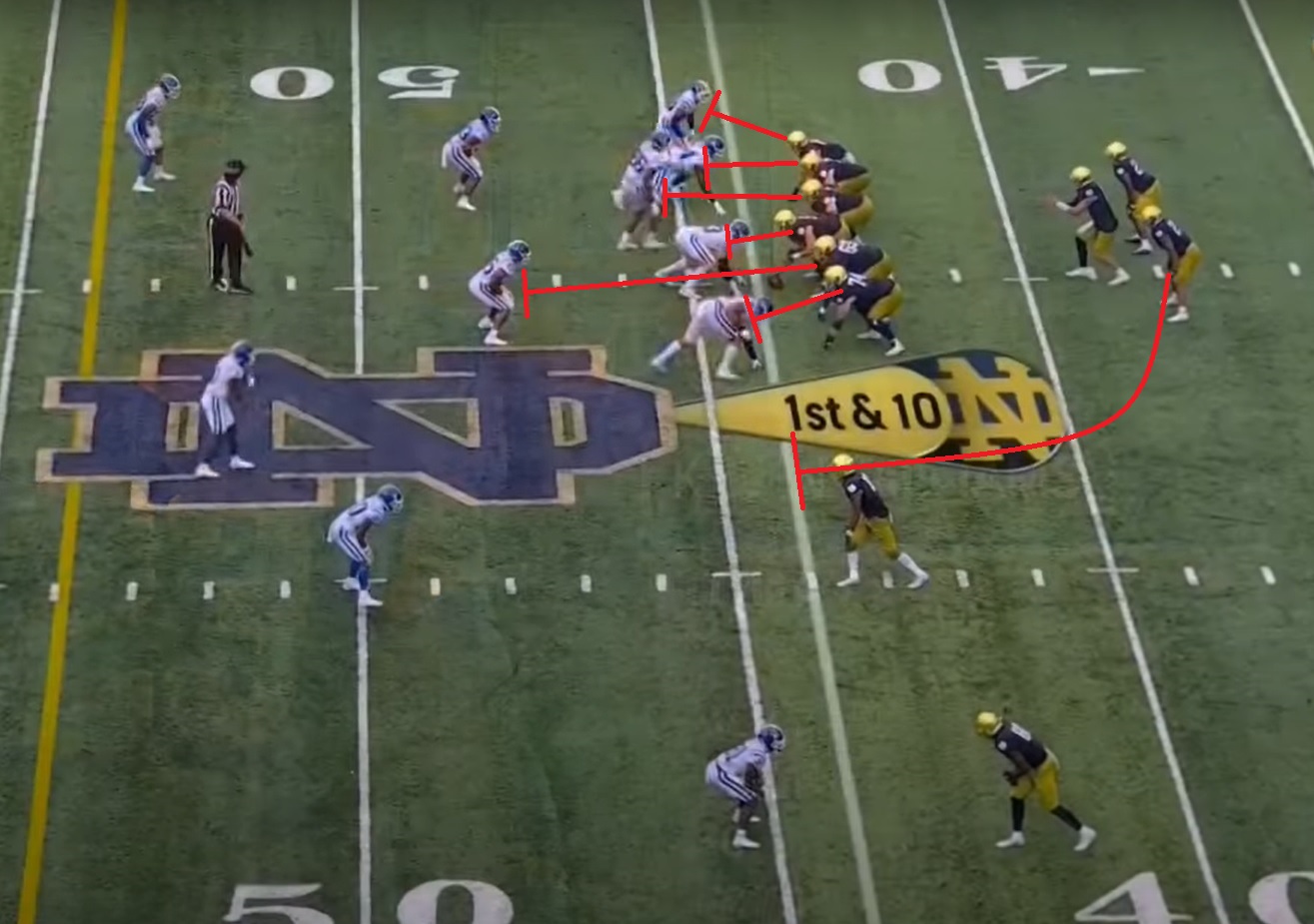
Just like before, we start by looking at who is covered. And just like before, everyone has a defender lined up directly in front of him except for Aaron Banks. Williams’ job is a little different. His job is to act like the running back and find a hole to run through. Once he does that, his next job to just block the first person he sees.
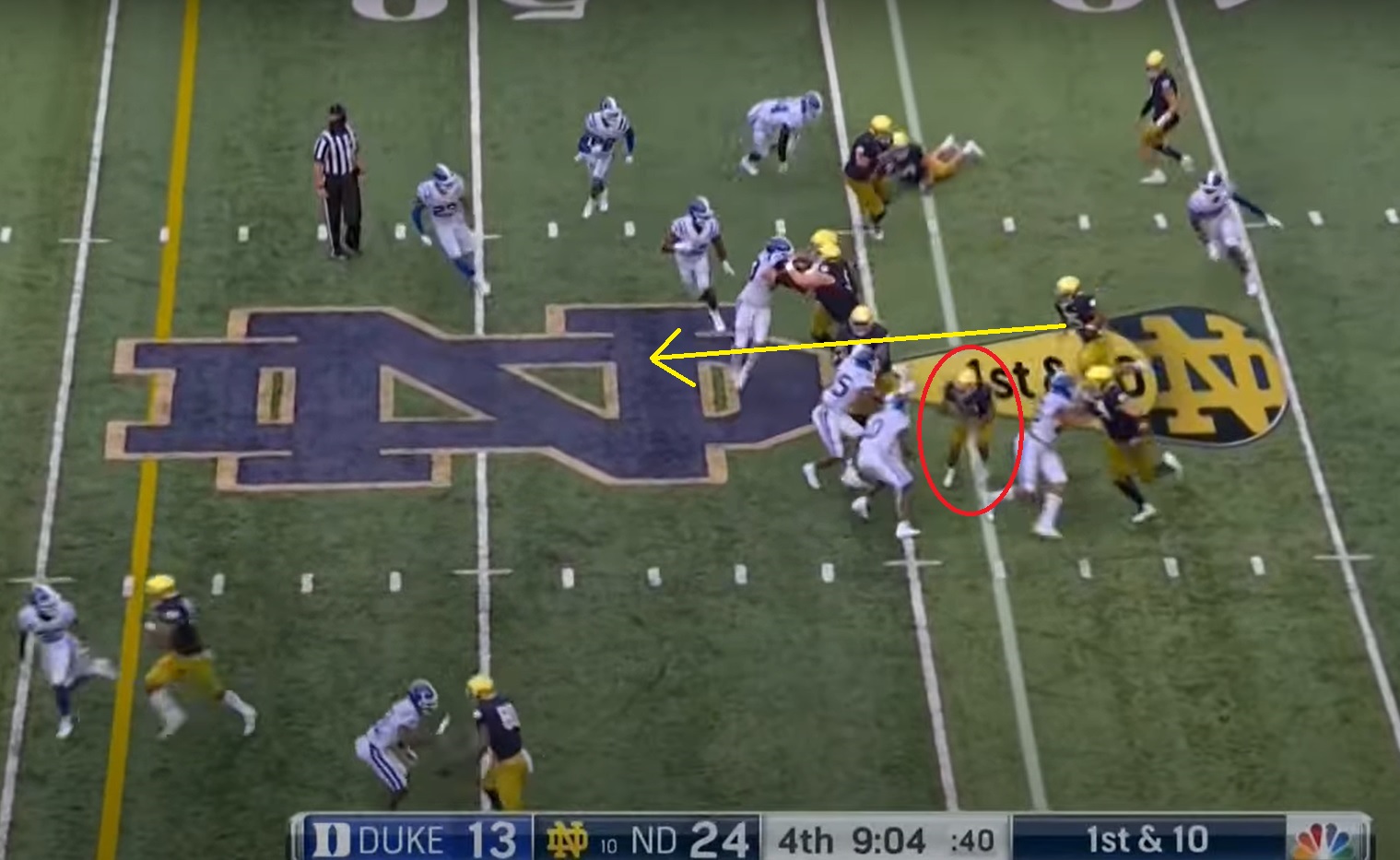
The offensive line does a great job moving the Duke defenders off the line. Williams (red circle) leads the way and blocks the safety that came down to keep outside contain. Tyree easily cuts upfield and picks up a big gain.
Here is the play in gif form:
Complimentary Plays
One thing to keep in mind is that just because a team primarily uses zone blocking does not mean they only use zone blocking. Zone purist will tell you the only two running plays you need are outside zone and inside zone. But almost every team mixes in some gap schemes with their zone schemes and vice versa. And the same goes for the Irish.
One example is the counter run.
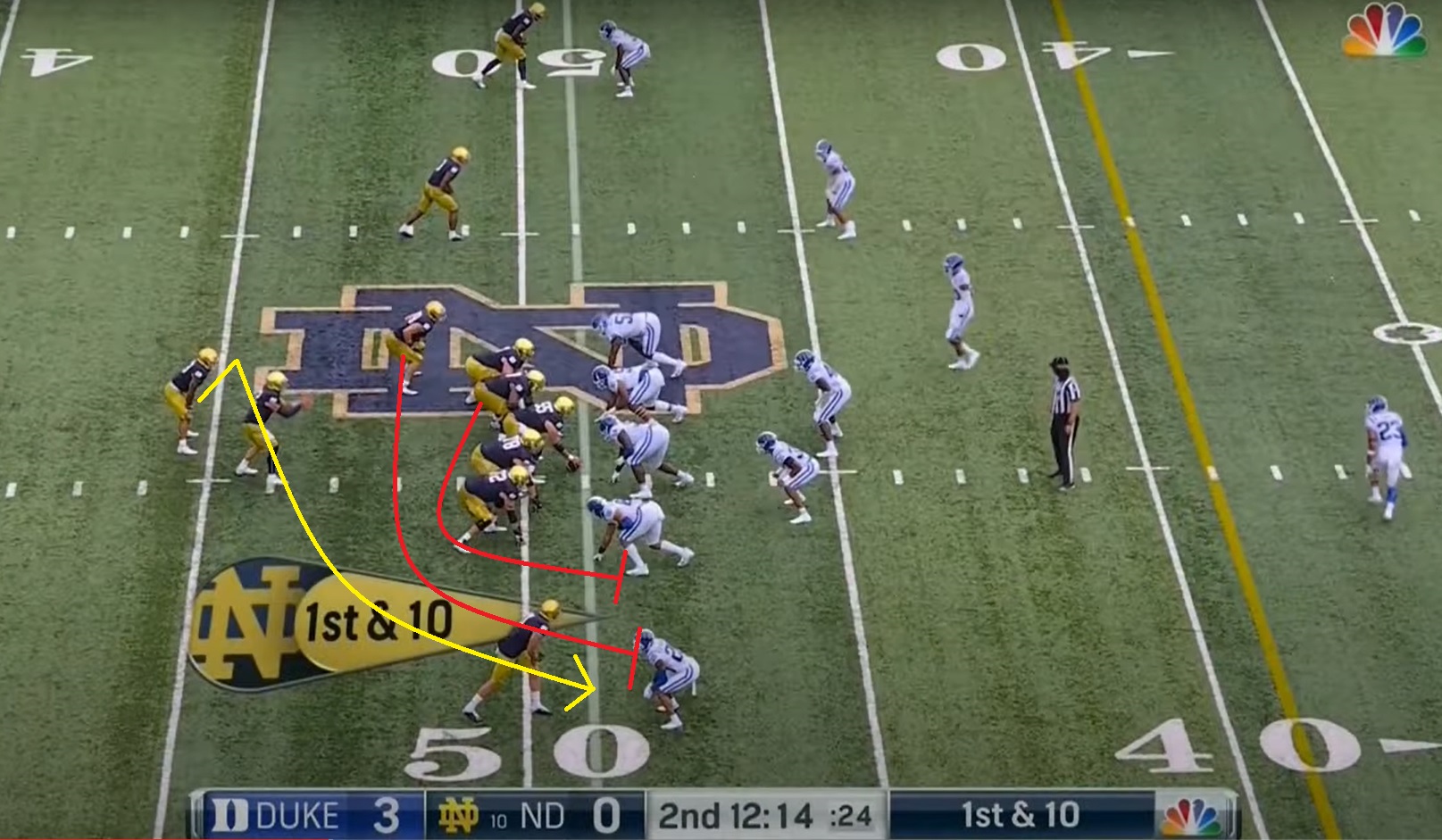
On this play, the tight end and guard pull around to lead the way for the running back. The back takes a quick jab step away from the quarterback to throw off the defense.
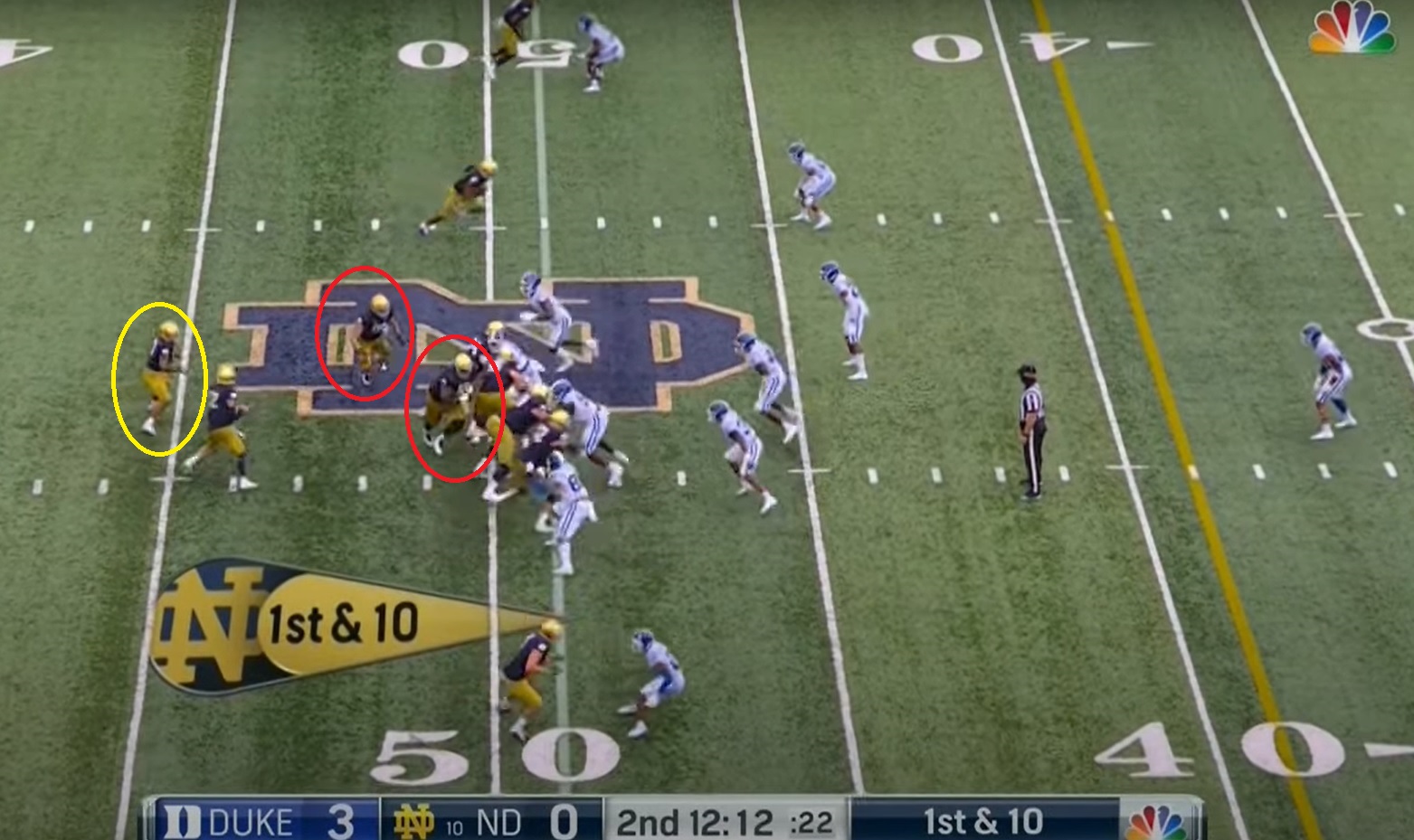
In this picture, you can see Williams (yellow circle) take a small step to his left while Banks and Brock Wright (red circles) pull around.
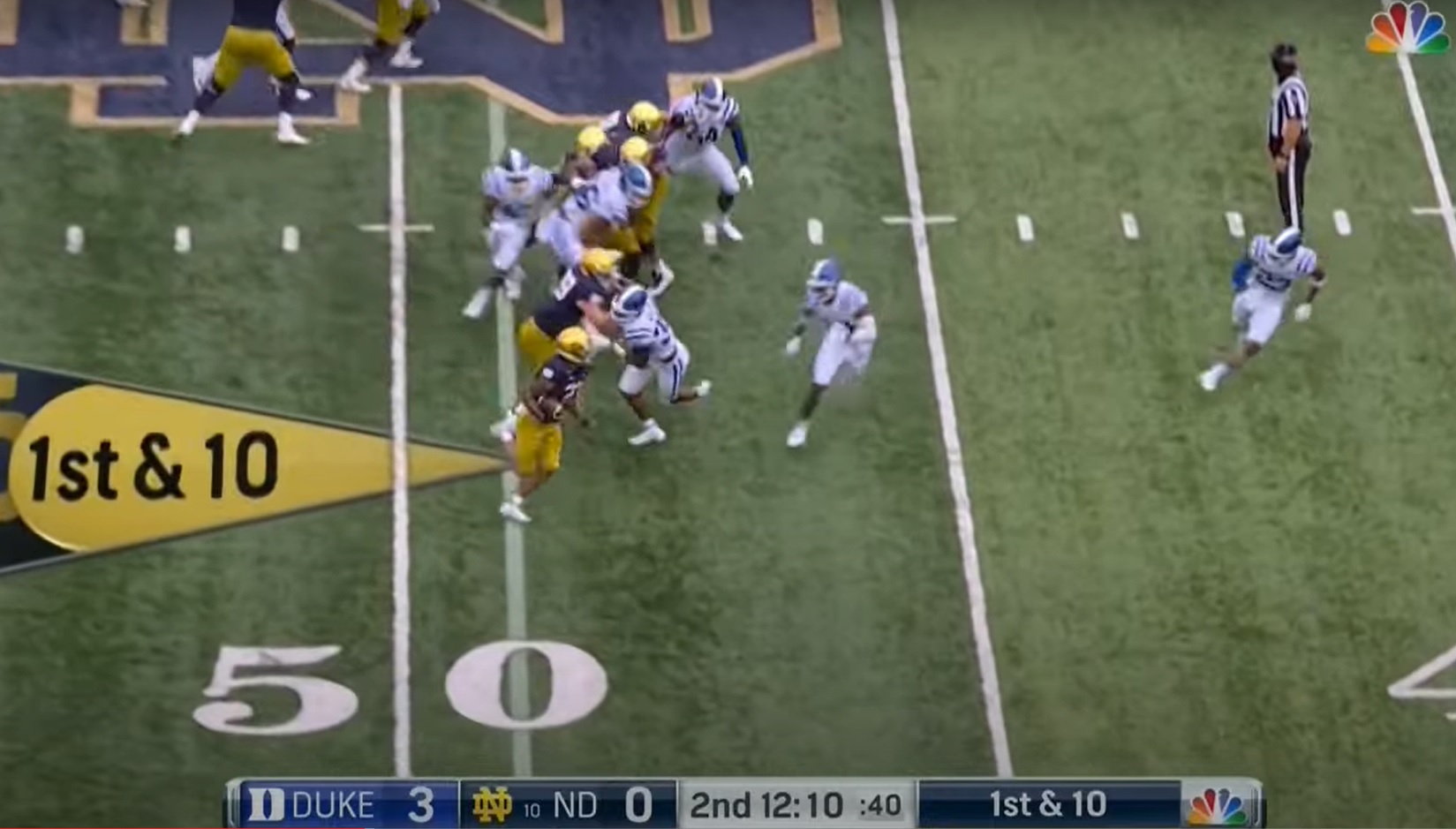
The edge is sealed off and Williams turns the corner for a good gain.
But we’ve seen this play before. It wasn’t used much while Chip Long was OC, but the Irish used it to great effect during the 2015 season. Here’s Josh Adams ripping off a long touchdown run against Stanford that season:
Another play that Coach Rees is reusing is called “down G”. In this play, the linemen all block “down,” meaning they block away from the play. The playside guard (the “G” part of the name) pulls around as a lead blocker.

Tommy has only run this play out of the I formation with Tommy Tremble lined up at fullback. On this play, tackle Liam Eichenberg and Brock Wright block down on the two linemen to seal the edge, Banks pulls around, and Tremble leads the way for Williams.
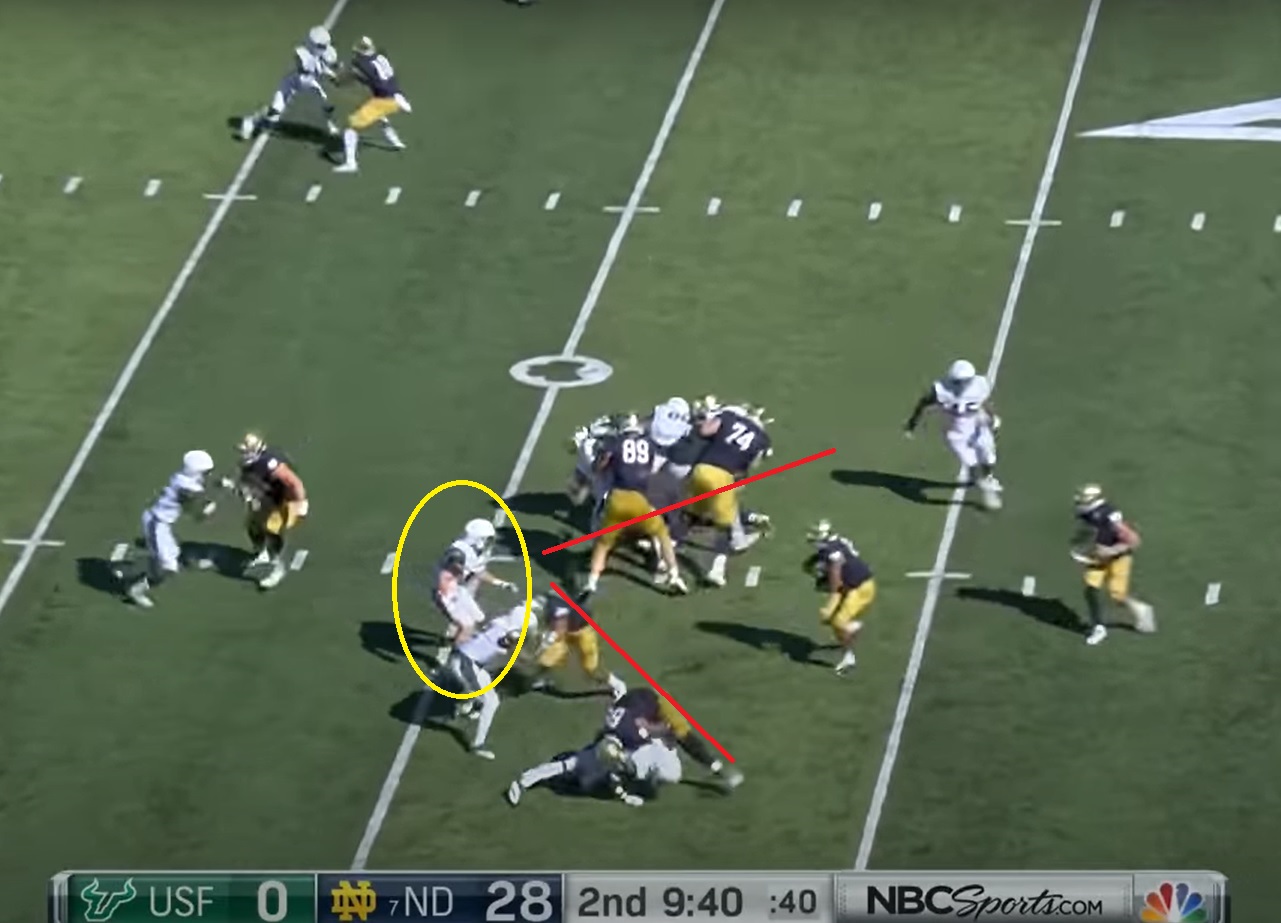
Williams has a wall of blockers, but there is one free defender coming through the hole. This is where having an athlete like Kyren Williams is so important.
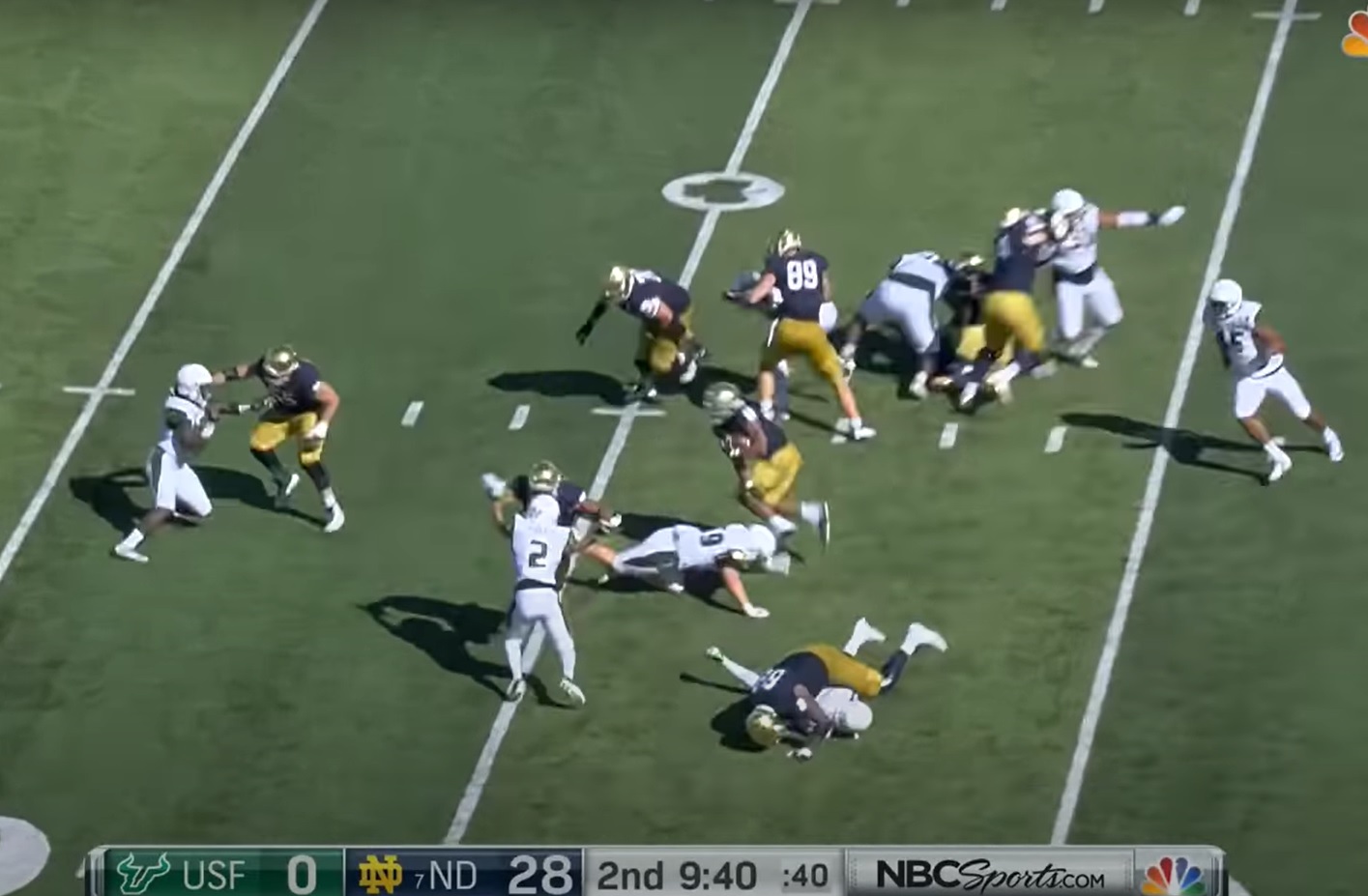
Williams jukes the defender out of his shoes and rips off a big gain. Last season, that’s a one or two yard run.
This is another play we’ve seen before, and not just out of the I formation. Chip Long called this play quite often when he was the OC. The Irish ran for a ton of yards using this play against Wake Forest in 2018. Here’s one example:
Final Thoughts
This feels like the type of offense Notre Dame should be running, doesn’t it? The Irish have never had trouble recruiting stud offensive linemen and tight ends so it makes sense to build an offense around those positions. The closest we’ve seen to this style is in 2017, but then Brandon Wimbush got the yips and everything fell apart.
It remains to be seen if Coach Rees will continue to use two and three tight end sets like he did against USF. Against Duke, we saw a lot of formations with Javon McKinley, Ben Skowronek, and Lawrence Keys/Avery Davis, with Tommy Tremble as the lone tight end. Rees did sub in Brock Wright or Michael Mayer fairly often, but more often than not Notre Dame had three receivers on the field against the Blue Devils.
Whether it was because of USF’s small defense, the injury to Skowronrek, or an adjustment after the up and down outing in the first game, Rees used a lot of heavy formations against the Bulls. We’ll have to see if that will be the norm going forward. But if the goal is to get the best 11 players on the field, I think it would be hard to argue that at least two of those 11 players aren’t tight ends.

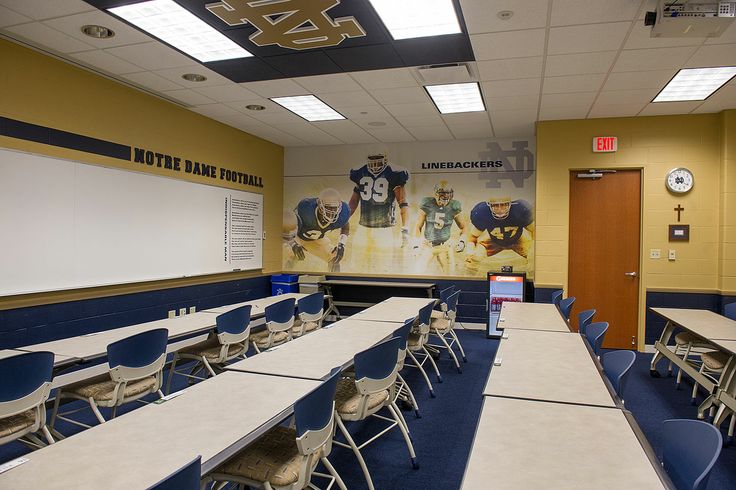






Burgs — this is GREAT STUFF! Makes it clear, simple, easy to follow… and I hope if we can get ’em healthy, the way ahead. Merci bien!
Great points. And while it’s getting some attention, McKinley’s blocking has really been impressive and a treat. Not much of a receiving threat but it’s been fun to key on him in the replays and see some great work going on there.
Yeah, he’s basically an extra tight end on the field. Which isn’t a bad thing! But it would really open up the offense if they could get some production out of him. I think he has the potential to be a poor man’s Miles Boykin, which would be excellent.
A poor man’s Miles Boykin or a rich man’s Daniel Smith?
Yes
This is a great article – thanks!
I love these articles. Never played, so I learn a ton from them. Thanks, burger!
I have some apprehensions about Rees as OC due to lack of experience, but I’ll say this — I trust him to think logically and design gameplans that make fundamental sense given our personnel and that of the opponent. My sense was that Long (who I never had strong feelings on one way or the other) sometimes got sucked into the “They’ll never expect THIS” type of thinking. Maybe way off-base, I dunno.
Long always seemed to have one or two perfectly called plays per game (throwback to Alize against Stanford and the rollout for Book at Northwestern come to mind), but yeah, a lot of the base offense seemed to be trying to jam things in a certain way.
I think another possible issue with Long was that he was going to call what he wanted regardless of what the abilities of the involved players were. Like, he might know that player X has shown he can’t make the type of block he needs to make on this play, but DAMMIT HE’S GOING TO DO IT THIS TIME AND IF HE DOESN’T I’M GOING TO TEAR HIM A NEW ONE AND I’LL KEEP DOING IT UNTIL HIS LAZY ASS FIGURES IT OUT. (This may also be somewhat more than conjecture. Possibly.)
I think that while it’s perfectly fair to have doubts about Rees’s experience and readiness for the better DCs on the slate (I have my reservations too), this is one area where he’s much better than Long. I think he doesn’t ask players to do things they can’t do, and I think the players appreciate that in him.
It doesn’t sound like that’s much conjecture about Long from about all available information.
I also found it pretty interesting a screen pass play that Long called last year (and attributed to him) was actually a Tommy Rees idea brought from the Chargers. Rees is young in human years — but as a coach’s son, student of the game, first one in last one out, blah blah, he’s not inexperienced with Brian Kelly teams or college football.
So maybe this is my naivety or over-reaction to a fairly smooth start on Rees’ part, but I don’t have much doubts on him. Not saying I expect he’s Joe Brady or an absolute genius OC, but I think he is steady and capable and will do a pretty solid job.
I’m way more worried, for instance, on Ian Book’s vision or feet or ability to make a downfield throw rather than Rees’ ability to do his part on game day. (And I guess maybe as a stickler you can say it’s on Rees to have prepared and groomed Book into a better QB by now, and maybe that’s not wrong, but I’m just thinking Ian Book is who he is. Pretty good but never going to be Superman, regardless of coaching).
I agree with just about all of this. I have confidence in Rees, and it helps that he has input from others with more experience such as McNulty.
As you note, I think that Book has hit his ceiling and he is who he is at this point. Let’s just hope that this year’s Clemson game is more like the Georgia game (where ND stayed in the game with a chance at the end) and less like the playoff game.
Long was also a really crappy tight ends coach, which didn’t help either.
This was a tremendous article, thoroughly enjoyed it! Glad you included the 2-back sets with Tyree and Williams. I assume we will see more of that in the important games and it’s very much something to look forward to.
Until then, RTDB, Tommy!
https://twitter.com/aarontaylorcfb/status/1308840131307147265?s=21
Good Stuff Burger.
Talk on the last II podcast was that Quinn and Long did not see eye to eye. It seems one reason for Long leaving was their “relationship”.
Quinn and Rees having a better working relationship can only help.
Excellent article Burger — love these breakdowns and this is one of the big reasons why I always renew my 18 Stripes premium membership package
Speaking of which, we are running a deal now. For just $9.99/month you can get:
*The untold story between Chip Long and the ND staff
*Insight into Notre Dame’s COVID testing
*The real reason why Ian Book won’t throw deep
*10 ways Jack Kiser’s name will be misspelled
*Clark Lea’s favorite South Bend/Mishawaka restaurants
Does any of the premium membership fee go towards a Derek Mason job-retention campaign?
Unfortunately, Vanderbilt might be staring down an unwinfeated season this year.
Knowing absolutely 0% about the guy, there’s no way Clark’s favorite restaurant isn’t Subway.
Lea is a Barnaby’s man.
18 Stripes exclusive: Savvy Jack cuts the line at Rocco’s
Rocco’s is more overrated than Texas A&M in September.